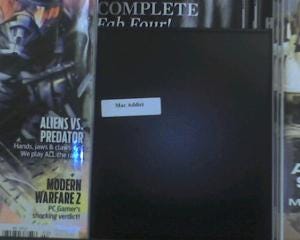A Bad Idea Resurfaces (Or, Why Plan-O-Grams Don’t Work)
I’m sure your first reaction to this title was either “Huh, what’s he talking about now?” Or perhaps, “Yeah, like I didn’t already know that, Sherlock!”
It all depends on how close you are to the single copy sales business.
I first ran into a Plan-O-Gram back in the late 1980’s. A major national chain that was most likely frustrated with dealing with 250 different levels of service from their 250 different magazine wholesalers, decided to once and for all, solve the problem of the “messy mainline magazine rack” and their 250 magazine wholesalers who were ignoring their authorized title list.
My reaction was, “Oh, this will be very interesting.”
And it was.
Back then, my work was more regional than national and wholesaler consolidation had not set in. The area I traveled amongst tended to be Midwestern and Upper Midwestern states. My “Bunny Book” (A listing of all wholesalers in the USA and Canada that was published by Playboy Enterprises) from 1990 tells me that there were 69 wholesalers in that area back then.*
The retailer created a pretty intricate set of Plan-O-Grams that clearly reflected their desire to have clean mainlines and check out racks. They were determined to have racks that “reflected” their community. There were Plan-O-Grams for all the different sized racks in their stores as well as racks for different ethnic and income levels their stores services.
But as I traveled around to my different wholesalers, it became clear that this was not going to work the way the retailer intended. While all of the wholesalers made an attempt to comply with the lists, store level service is, well, dependent on who is servicing the stores. And what goes into the stores depends on who the distribution manager is.
Please note: The pictures you will see below were taken in the last six months and reflect how Plan-O-Grams are working in today's environment.

No matter where I traveled to, what I saw in store after store was the same thing. A leaner rack with fewer choices of titles – which is not necessarily a bad thing depending on the store. But the real display crime were the empty pockets on the mainline.

If you logo pockets on the mainline, you damn well better make sure that none of those titles are going to go out of business. Or you’ll have an empty rack. You damn well better make sure that your warehouse is capable of providing reorders if you sell down on that title. Do you really want an empty pocket on the front row? Do you really want just one copy sitting there at the end of week one on sale?
You damn well better make sure that your in store merchandisers have the flexibility and the knowledge that if they don’t have the magazine that’s supposed to go in that pocket, that they don’t leave it empty. What’s that you say? Why are you on the floor laughing? Is there a problem with in-store merchandisers? What’s that you’re asking? Your merchandisers don’t realize that an empty pocket is a dead zone? They aren't trained to take initiative like that? They don't realize that you’re not going to get any sales from an empty pocket?

If you don’t generate sales, you’re going to lose space.
In the late 1980’s Plan-O-Grams for this retailer didn’t work. Even the smaller wholesalers who only served a handful of stores had problems providing the required level of service to their stores.
Fast forward to the summer of 2010. Do I need to say anything else?
Plan-O-Grams are a response by the retailer to what they perceive to be a problem with their category. That perception may or may not be accurate, but it’s not the reaction that we in the publishing industry, especially we publishers who are supposed to be selling our category want to support or encourage. For far too many years, I've been hearing the excuse that we don't do a good job explaining our line of product to the retailers. You'd think we would have learned how to do this by now.
(* By comparison, today, there are two major “national wholesalers covering about 90% of the business in these states, and 10 smaller wholesalers and a bookstore based wholesaler covering the rest).


